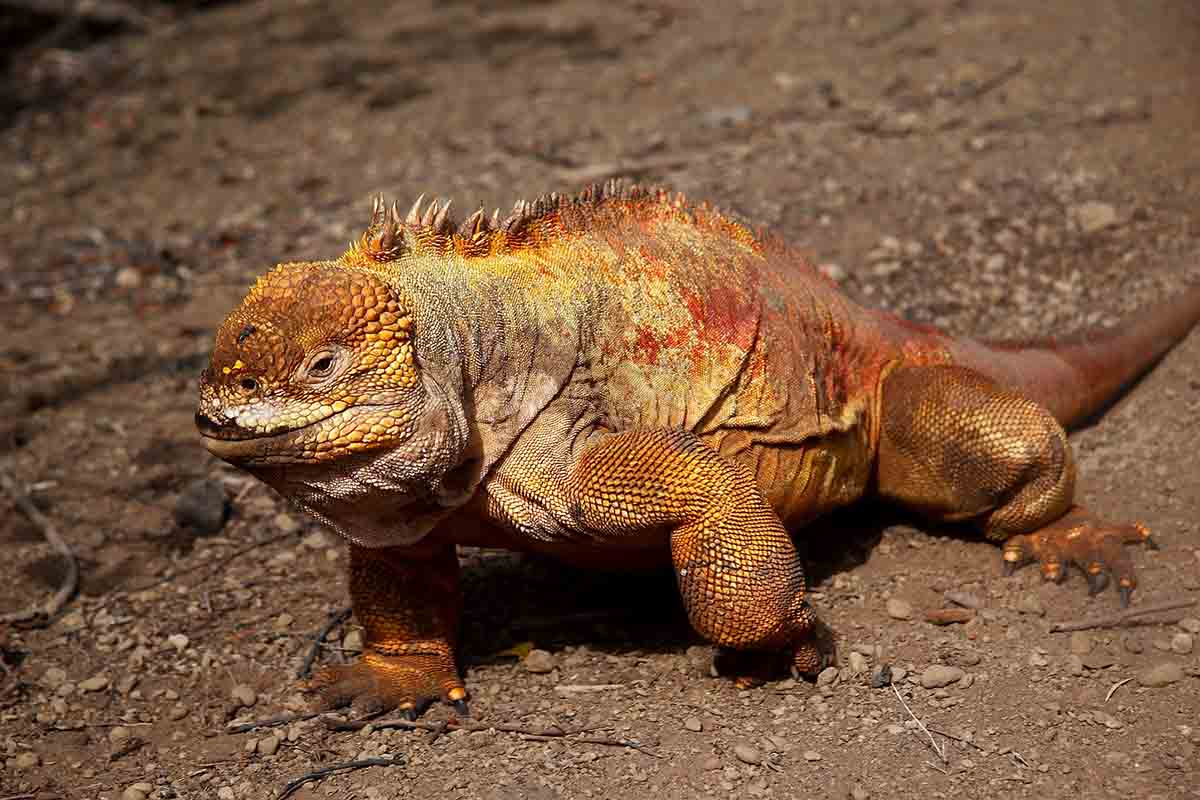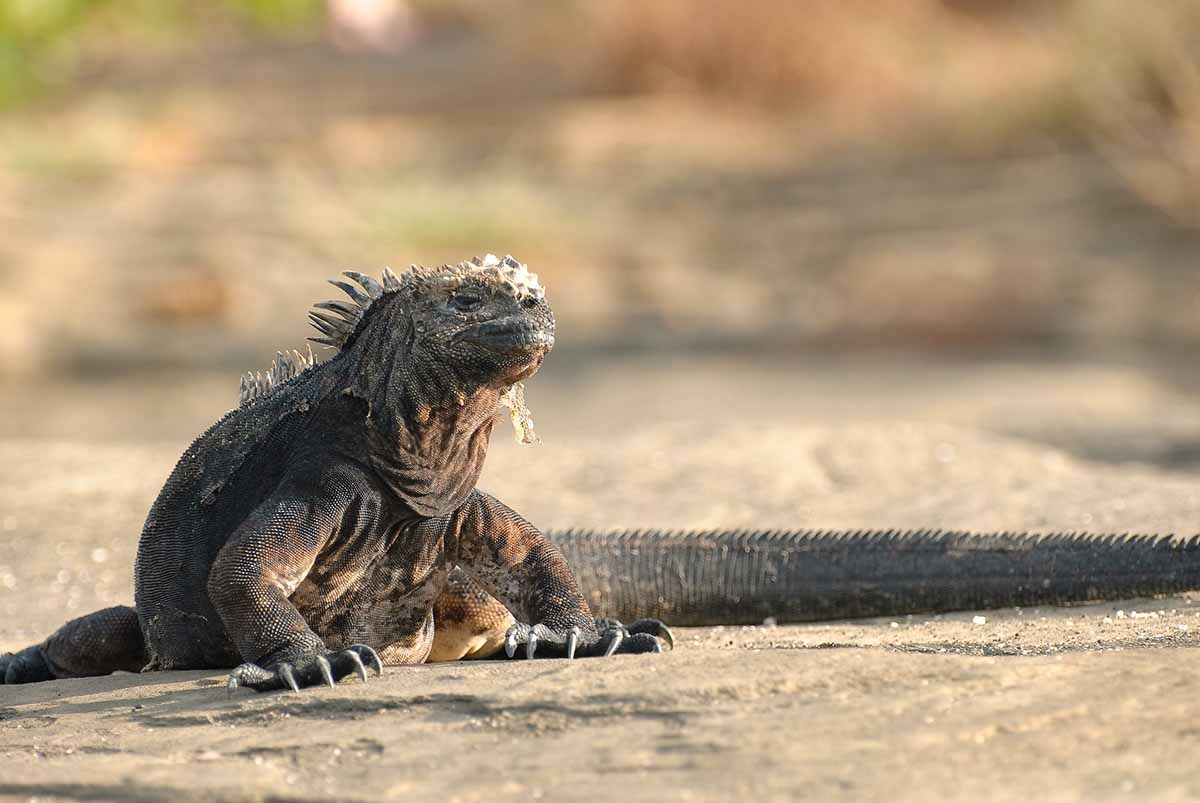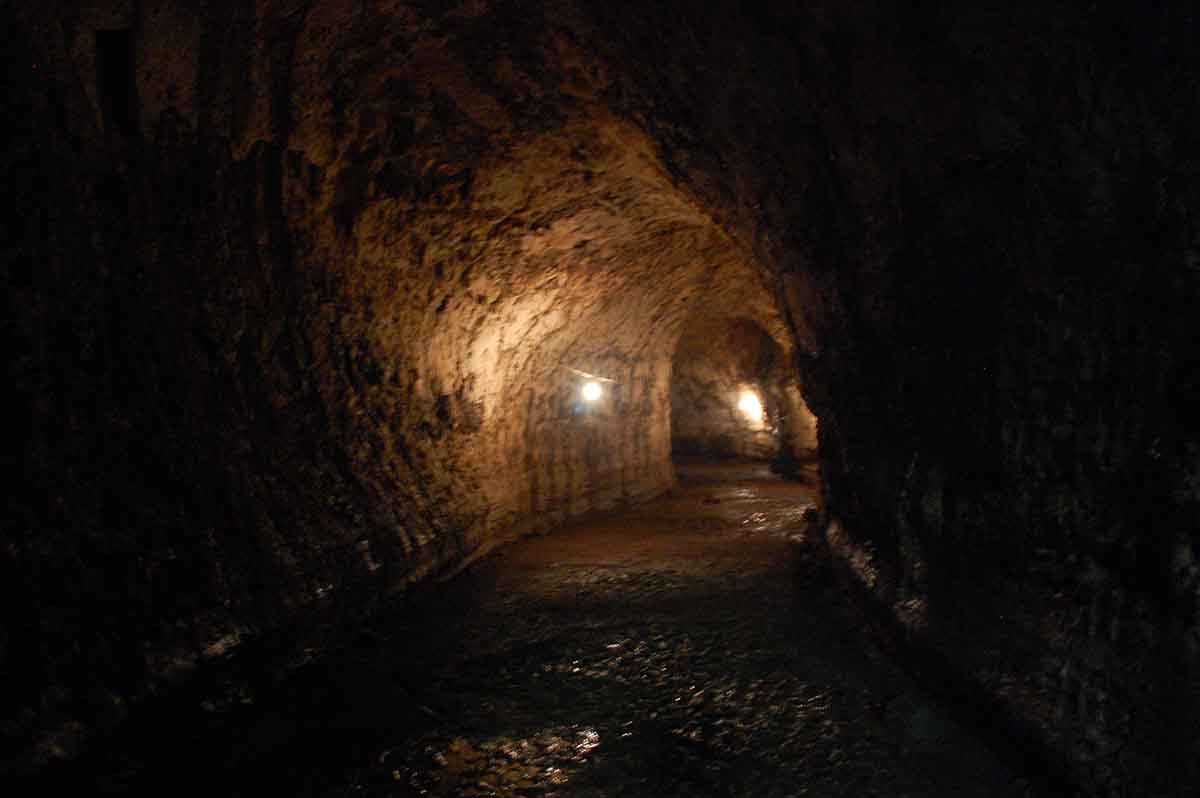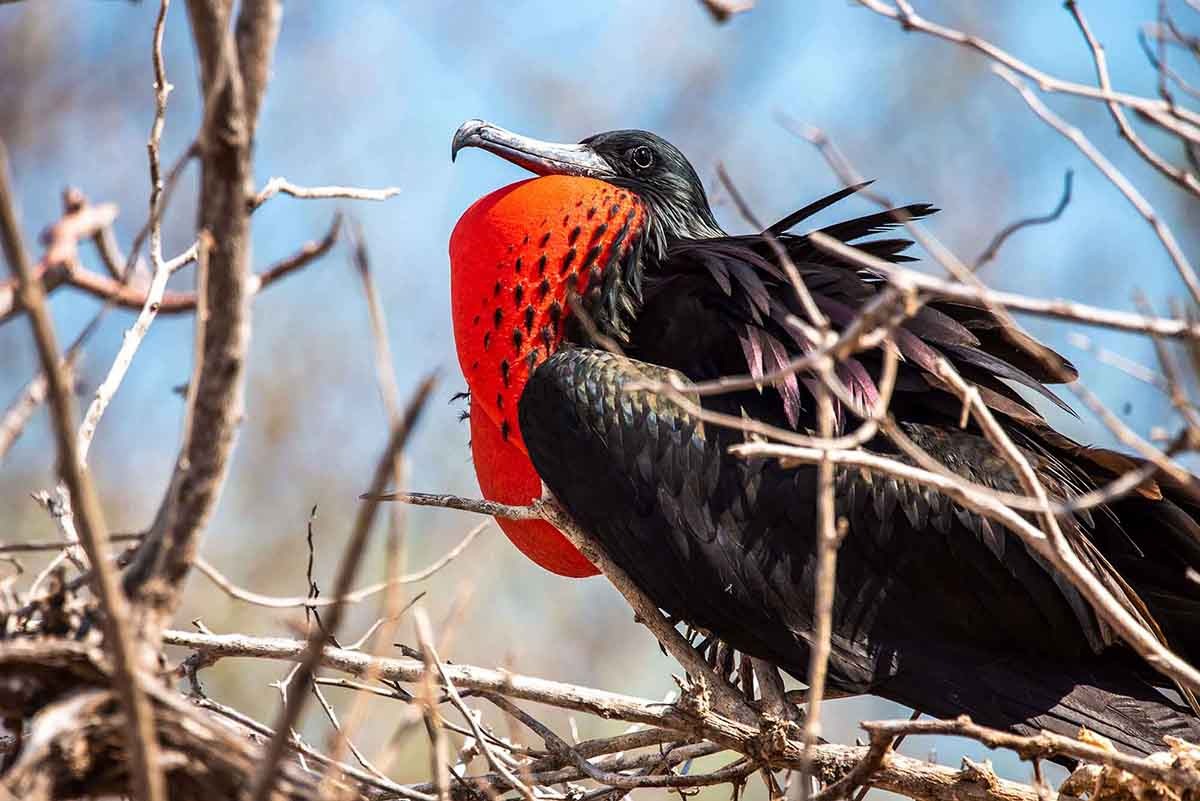North, West and Central Galapagos Islands cruise 8 days
Transfer to the yacht after arrival at the Baltra airport.
Navigation and lunch service to Seymour Island North of Baltra
North Seymour Island
Dry landing. Nature walk in North Seymour
It is approximately 2.25 km (1.25 mi) long and crosses the inland of the island. It also explores the rugged coast. The trail crosses the inland of the island and explores the rocky coast. It also passes Blue-Footed Boobie colonies. Magnificent Frigatebird is a large, black bird that has a wide wingspan and a hooked beak. It is fast and excellent at vision. The large, red pouch at the necks of Frigatebirds is a signature feature. Boobies have a fascinating relationship with Frigates. The nesting area of North Seymour Bluefooted Boobies and Magnificent Frigatebirds is the same.
Guide briefing. Welcome cocktail. Navigation to Santa Cruz Island and dinner service.
Rancho Primicias & Highlands
Breakfast service. Dry landing. Visit the private estate "Las Primicias". This reserve is the best place to see the giant turtles of Santa Cruz Island. They can be viewed from close range.
Charles Darwin Station
Lunch service. Dry landing. Visit to Charles Darwin Scientific Station & Breeding Center. This is a great way to learn about the islands and their formation. Learn about the raising of the Galapagos turtles and meet Jorge, the famous single turtle. On weekends, the Scientific Station hosts many visitors to its beach.
Guide briefing. Navigation to Isabela Island and dinner service
Breakfast service. Dry landing. Visit Moreno Point*. Deep-water snorkeling.
Moreno Point
Moreno Point is where the forces from the Galapagos joined together to create an art work. You will begin the tour with a paddle boat ride along the stunning rocky shores, where you can often see Galapagos Penguins as well as shorebirds. The path then traverses through jagged lava rock. Crystal tide pools were formed as the black lava flow swirled, some surrounded by mangroves. This area is home to small blue lagoons and blue herons as well as pintail ducks from the Bahamas. The mangroves' green leaves are home to brown pelicans, which can be found nesting within the mangroves. These pools can be viewed from the edge of the volcano. You can also walk along the edge to see puffer fish, white-tipped sharks and green sea turtles. Introduced species have made this idyllic setting less beautiful. The area is home to feral dogs that are known for attacking sea lions, marine iguanas and other animals.
Urbina Bay
Lunch service and navigation to Urbina Bay Wet landing. More wildlife watching and nature walks Scuba diving.
Urbina Bay is located at the foot Alcedo Volcano south of Tagus Cove. It is one of the most impressive and recent examples of geological uplift within the Galapagos. When the molten material beneath the surface shifts, it causes an uplift. The shoreline was lifted by almost 15 feet (4 meters) in 1954. The coast was extended 3/4 mile out to sea, leaving behind giant coral heads and stranding large marine organisms. Shortly after, a Disney film crew visited the location and found skeletons of sea turtles, sharks and lobsters that were unable to locate the ocean due to the rapidly rising land. Newly formed tide pools were home to schools of fish. Near the former beach, you can see boulder-sized coral heads. A few weeks later, Alcedo's eruption followed the uplifting of Urbina bay.
Many Galapagos animals nest in Urbina Bay during the season. To lay their eggs, female tortoises travel down from Alcedo. The area is also home to Galapagos penguins and flightless cormorants, as well as brown pelicans.
The journey begins with a wet landing at the white sand beaches. The difficulty of the route will vary depending on the season. The trail is quite passable in the dry season, but can be very difficult during the wet season. The visitors will learn about the geological wonders of this region as they cross it. You will then reach the area of sandy beach. You can return to the landing spot on shorter visits by following the same route, while you can continue on to the new beach and coral heads with longer visits.
The site also features marine iguanas as well as some of the largest land-iguanas on the islands. Galapagos Cotton is an endemic plant that historians believe the Incas brought with them to the islands. Naturalists however think it may have floated from Peru.
Guide briefing. Navigation to Tagus Cove and dinner service
Breakfast service. Dry landing. Nature walk. Panga boat ride. Deep-water snorkeling.
Isabela Island: Tagus Cove
Tagus cove (Isabela Island), is located east of Fernandina Island, on the west coast Isabela Island. This cove is protected by two volcanic craters. It has been used as an anchorage since over 300 years. The nature trail takes you through the typical dry vegetation zone to Darwin Lake. It is a saltwater lake with a long narrow inlet. The trail ends at the top, where you can see the various vegetation zones and the Darwin and Wolf volcanoes. You can also observe Galapagos Penguins and Flightless Cormorants.
Fernandina Island: Espinoza Point
Lunch service and navigation to Espinoza Point, Fernandina Island*
Wet landing. Nature walks. Deep-water snorkeling
Fernandina Island, the youngest and most active volcano of the Galapagos Islands, is active every few years. Punta Espinosa's flat lava is a barren and stark landscape. But here, flightless cormorants nest on the point, sea-lions play in the tidepools, and large numbers marine iguanas adorn the sand. Here, we will also have the chance to compare the Aa lava types with the Pahoehoe.
Guide briefing. Navigation to Santiago Island and dinner service
Breakfast service. Wet landing. Visit Puerto Egas for a nature walk, salt mines, and fur seal grotto. Scuba diving.
Puerto Egas
The first step in a visit to Puerto Egas is to land on the dark sand beaches at James Bay. Walking along the rocky coastline offers the chance to see some of the best tide pools on Galapagos Island. You can see slugs, snails, hermits crabs, barnacles, fish, and even the rare four-eyed blenny. You will also find a variety shore birds, sea lions, marine iguanas and sally lightfoot crabs on the walk.
Two interesting excursions can be made from Puerto Egas. The first takes you to the location of one of the first entrepreneurs in the Galapagos. It is just a short walk away from the landing area. Salt was mined from the local salt crater for decades. In 1950, the industry was shut down leaving behind many rusted parts and old machines. From the crater cone, the trail follows the same path as wagon trains. Although the trail is not difficult, it can be one of the most intense hikes on the island. The trail is lined by arid vegetation that is cut by feral goats. The goats eat every leaf that is within their reach, leaving little for the endangered island animals. Bird lovers will delight in the chance to see a Darwin's finch or the endemic Galapagos Hawk, as well as the colorful vermillion flycatcher.
The view from the crater's rim is breathtaking. This extinct volcano, whose floor is now below sea level, can be seen from the crater's rim. The crater is flooded with salt water, creating a small lake. Many have failed to extract the salt from the sun.
The older orange lava fields that support vegetation, including Palo Santo trees, can be seen looking away from the crater.
The fur seal grotto is the next stop on the second excursion. It starts just beyond the tide pools. The lava-rocked pools are home to fur seals and sea lions. Visitors may have the chance to swim and see fur seals here.
Fur seals were once nearly extinct due to their fur coats. The Galapagos Fur Seal, which is the smallest fur seal in the southern hemisphere now ranks alongside the sea lions, is smaller than the others. They hide in caves or shelves built from rocky lava rock cliffs during the day to protect themselves from the scorching equatorial sunlight. They eat squid, fish and avoid sharks at night.
This is a beautiful place to snorkel and swim in the clear waters.
Espumilla Beach
Most people who visit Espumilla Beach now do so to see birds, not water. You can walk just a few steps inland through mangrove forests that are home to the common stilt. These mangroves are also home to sea turtles who nest in them. There is also a brackish lagoon that houses pink flamingos as well as white-cheeked pintails. You will follow the trail for a loop, passing a small knob and then returning to the beach. If you are observant, you may see a variety Darwin finches and vermilion fly catchers along the trail. If time permits, visitors can swim or snorkel at the beach.
Buccaneer Cove
Lunch service. Panga boat ride to Buccaneer's Cove. Deep watersnorkeling
Buccaneers Cove was located less than an hour from Puerto Egas and served as a safe haven to pirates, sailors, and whalers in the 18th and 19th centuries. They were able make repairs to their ships by anchoring in the bay, while others went ashore to get fresh water, salt, and firewood. Ceramic jars, once considered the cargo of a mariner many years ago, were discovered at the bottom the bay. The jars contained wine and marmalade.
Today, there are very few boats that stop at Buccaneers Cove. Many boats cruise by at a slower speed, allowing visitors to see the steep cliffs of tuff formations as well as the reddish-purple sand beaches. The dramatic scenery is enhanced by hundreds of seabirds perched on top of the cliffs. The "monk rock" and the "elephant rocks are two of the most well-known rock formations. Buccaneers Cove is home to a large number of feral goats. To protect native vegetation from being destroyed by this introduced species, the National Park Service has temporarily fenced off a portion of the area. Just north of the valuable fresh water supply, which once attracted whalers and pirates, is a wet landing.
Guide briefing. Navigation to Rabida Island and dinner service
Breakfast service. Dry landing. Rabida Island Nature Walk Deep-water snorkeling
Rabida Island
Rabida Island's unique feature is its extraordinary red color. This is due to the high level of oxidized iron found in the lava. We will see nine types of finches here, along with large-billed flycatchers (large-billed flycatchers) and brown pelicans. A small salt-water lagoon is available where you can see greater Flamingos and a colony of sealions.
Santiago Island: Sullivan Bay
Lunch service. Panga boat ride. Dry landing. Nature walk in Sullivan Bay. Scuba diving.
This bay is known for its wide, Pahoehoe (or rope lava flows).
It's a great place to see the lava flows in action and compare their characteristics.
Guide briefing. Navigation to Genovesa Island and dinner service
Breakfast service. Dry landing. * Nature walk Prince Phillip's Steps. Deep-water snorkeling
El Barranco
This is also known as El Barranco bird island. It's a strenuous walk up a steep cliff where nesting seabirds such as tropicbirds, red-footed bobies and red-footed blue boobies can be found. The trail takes us through Palo Santo forest, passing red boobies as well as great Frigatebirds.
Lunch service. Wet landing. Nature walks. Scuba diving.
Darwin Bay
Darwin bay is the caldera from a collapsed volcano. It is a short walk to a coral beach. If you are looking for more action, there is an optional walk that crosses lava rock. The path offers stunning views of the cliffs and ample opportunity to capture the incredible bird life. This path may allow you to see species such as red-footed and swallow-tailed birds, Nazca boobies and large ground finches.
Guide briefing. Farewell cocktail. Navigation to Daphne Island and dinner service
Circumnavigation. Breakfast service. Check out at 8 AM and depart for the airport
Daphne Island is located north of Santa Cruz Island, and west of Baltra Island in the middle of the Galapagos Archipelago. There are actually two islands, Daphne Major & Daphne Minor. These islands are among the most accessible Galapagos Islands. They can be reached easily by cruises and tour boats. We will sail around these islands to take in the stunning views of Galapagos.




Included
- Scheduled visits and activities with a professional bilingual guide
- All meals on board, snacks, purified water, tea and coffee
- Accommodation in standard cabin / bunk with private bathroom and air conditioning
- Assistance 24/7 during the trip
Not Included
- Air tickets to / from Galapagos from / to Quito, Guayaquil or combined route
- Entrance to the Galapagos National Park US $ 100 p.p. (cash in the Islands)
- Galapagos Control Card US $ 20 p.p. (at the airport before check-in)
- Soft and alcoholic drinks on board; personal expenses, extras and tips guide and crew (cash)
- Rent of snorkeling equipment and wet-suits on board (in cash)
- Travel insurance with medical, cancellation and other unforeseen coverage
- Other services in Continental Ecuador and not specified in the program
Highlights
- Explore the northern and western visitor sites of the Galapagos islands in one itinerary
- Enjoy the seabreeze as the crew opens up the sails and the Nemo graciously dances through the Galapagos waters
- Encounter the flightless cormorant an icon in evolution alongside Galapagos penguins, marine iguanas and other endemics
- Visit nesting sites with red footed boobies and their chicks.